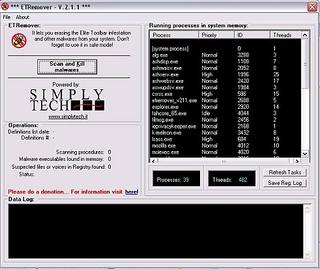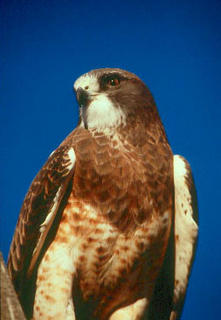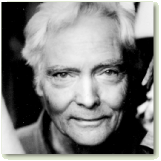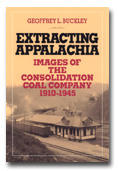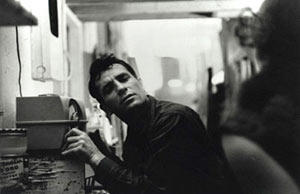The following information on the Saltonstall Fellowship and Grants for New York State residents has recently been received from Dan Wilcox. Dan manages the Poetry Motel foundation newsletter and can be contacted at
dwlcx@topica.com should anyone wish to subscribe to the newsletters. Fresh information arrives as often as several times a day.
Dear NYS arts groups,
Please help us spread the word about the Saltonstall
Summer Fellowship and Grant opportunities for
individual artists and writers who live in NYS. (SEE
our call for entries below.) Please list our info in
your newsletters, e-announcements, web sites, blogs
and any other communications you have with the artists
and writers in your region.
Please note: Our summer fellowship competition is open
to all artists and writers who live throughout New
York State; our grant competition is open to artists
and writers who live in the central and western
counties of NYS. Eligible list of counties is at
www.saltonstall.org.
I am available to make presentations about the
Saltonstall Foundation in your county. Please contact
me at 607.539.3146.
Many thanks,
Laurel Guy
Program Director
Constance Saltonstall Foundation for the Arts
www.saltonstall.org
CALL FOR ENTRIES
2006 Summer Fellowships and Grants available to
Artists and Writers of New York State
APPLICATION DEADLINE: January 15, 2006
Applications on line at www.saltonstall.org
SUMMER FELLOWSHIPS
Artists and writers who live in New York State are
invited to apply for month-long summer residencies at
the Saltonstall Arts Colony in Ithaca, New York.
2006 Summer Fellowship Categories
· Poetry
· Prose (Fiction and Creative Nonfiction)
· Photography
· Painting, Sculpture and other visual arts
Each artist has a private apartment and bath with
ample working space (including large studios for the
painters and a black and white darkroom for
photographers.) All studios include a balcony or a
patio.
Five artists are in residence in each session: One
poet, one prose writer, one photographer and two
painters and other visual artists. Our colony chef
serves delicious vegetarian meals on weeknights and
the kitchen is kept stocked with basic supplies so
that residents may make other meals for themselves.
The stunning 200 acre Saltonstall Arts Colony is
located in Ithaca, New York in the heart of the
beautiful Finger Lakes region. The summer fellowship
competition is open to all artists and writers
throughout the entire state of New York (including
NYC.)
GRANTS
The Constance Saltonstall Foundation for the Arts
annually awards grants of $5,000 to writers and
artists who live in the central and western counties
of New York. See www.saltonstall.org for list of
eligible counties. Grant categories change annually.
2006 Grant Categories
· Poetry
· Creative nonfiction A prose form that, while
dependent on observation of the actual world and often
on personal memory, also dependslike fictionon the
imaginative abilities of the writer. The genre
includes the personal essay, the memoir, the
meditative reflection, and other examples of writing
capable of transcending mere fact to provide aesthetic
pleasure and insight. Often confused with journalism,
creative nonfiction celebrates the integrative and
revelatory. Recent examples of the form can be found
in the prose of James Baldwin, Annie Dillard, Andre
Dubus, and Stephen Jay Gould.
· Works on Paper Includes printmaking, drawing,
painting, collage and other two dimensional media on
paper (excluding computer generated images.)
· Photography Digital and traditional
INVESTING IN CREATIVITY: Who We Are and What We
Do The Constance Saltonstall Foundation for the Arts
(CSF) is committed to serving the individual artist
(especially in the Finger Lakes region) through all
stages of the creative process -- from research,
development and creation through distributing and make
their work more accessible to the public. We serve NYS
artists and writers with grants, professional
development seminars, access to free studio space, and
summer fellowships that place them in residence at our
art colony. The general public benefits from cultural
programming with individual artists.
A diverse population of emerging, mid-career and
established NYS artists and writers have been in
residence here. The artists are given time, space and
support for their own creative research and risk
taking. As Edith Isaac Rose said, "The spacious,
comfortable live/work quarters are perfect. The size
of the group and our particular group formed a
community very quickly. All of us cherished having
continuous time to explore our work. When I think of
the Saltonstall I think of a place I came to and
didn't want to leave." Indeed, past Saltonstall
Fellows have said that our Colony provides one of the
best residency experiences in the country. Over 150
outstanding NYS artists, including photographers,
writers and visual artists have participated in our
summer fellowship program to date.
There are an estimated 300 artists' communities in the
U.S., and they are rapidly gaining recognition as the
largest network of direct support to independent
artists.
Some of our most enduring classics have been created
at artists' communities: Thornton Wilder's Our Town,
Aaron Copland's Appalachian Spring, James Baldwin's
Notes to a Native Son, to name a few.
The Constance Saltonstall Foundation for the Arts is
committed to supporting the voices and visionaries of
our own time. Visit www.saltonstall.org to learn more
about our programs and how you can get involved.
Mail: 435 Ellis Hollow Creek Road, Ithaca, NY 14850 Phone: 607.539.3146 Web: www.saltonstall.org E-mail:
http://us.f503.mail.yahoo.com/ym/Compose?To=info@saltonstall.org&YY=7316&order=&sort= -- The Constance Saltonstall Foundation for the Arts 435 Ellis Hollow Creek Road * Ithaca, New York 14850 telephone: 607.539.3146 * fax: 607.539.3147
http://www.saltonstall.org/ http://us.f503.mail.yahoo.com/ym/Compose?To=info@saltonstall.org&YY=7316&order=&sort=The Virtual Grub Street main blog has recently been returned to Blogger's "Next Blog" button tour. Having found the comments enabled on the newest "American Life in Poetry" column, the following fellow bloggers took the opportunity of a little free advertising. I've left these ads in the comments section for several days and now transfer them to this mailbag column. They will otherwise be deleted. I will endeavor to remember to disable the comments on all future ALP columns.
8:13 PM, Anonymous said...
Google about to launch IM and voice service?There's been buzz on Google releasing an IM product of some sort , and now it looks like they've been spotted running a Jabber server .So this is YOUR blog - nice! I have no blog yet, but I've written a rosegarden ebook. And I am running a
rose garden ebook site. But blogging seems like more fun - it's interactive, whereas I rarely have discussions with my visitors. Well - come and check it out if you get time :-)
At
8:29 PM, Anonymous said...
Your blog is great I'm sure you'd be interested in
lunch cooler Stop lunch cooler
At
8:38 PM, Anonymous said...
Thanks for the terrific blog. If you have a few moments, please checkout my
Holistic Skin Care related site.
At
8:52 PM, Anonymous said...
Hello, you have a great blog here! I'm definitely going to bookmark it!I have a
HIPAA Privacy Training site. It pretty much covers HIPAA - HIPAA Privacy Training related stuff.Come and check it out if you get time :-)
At
8:56 PM, Anonymous said...
Arbitron Audits Podcast AudiencesArbitron announced today that they have successfully started auditing podcast audeiences ... The Z100 podcasts were then downloaded to an MP3 player and played over headsets using the portable people meter headset adapter.
Used Car LoansAt
9:00 PM, Anonymous said...
ClickZ Blog LaunchedJust a quick note that our sister site ClickZ has launched a blog. Executive Editor Rebecca Lieb explains more in ClickZ Is Blogging .Excellent offers are available for both single and multi-room Direct TV Free Satellite TV systems. Check out my site on
Direct TV FreeThere were two
very pertinent comments, on the other hand, appended to the article "
How to Remove ISearchTech.SideFind". In fine, Spybot S&D 1.4 would no longer seem to be able to remove the most recent version of ISearchTech adware/malware. I will research this problem over the coming days. The first update article should appear on the
Virtual Grub Street Front Page journal/blog as early as today.
